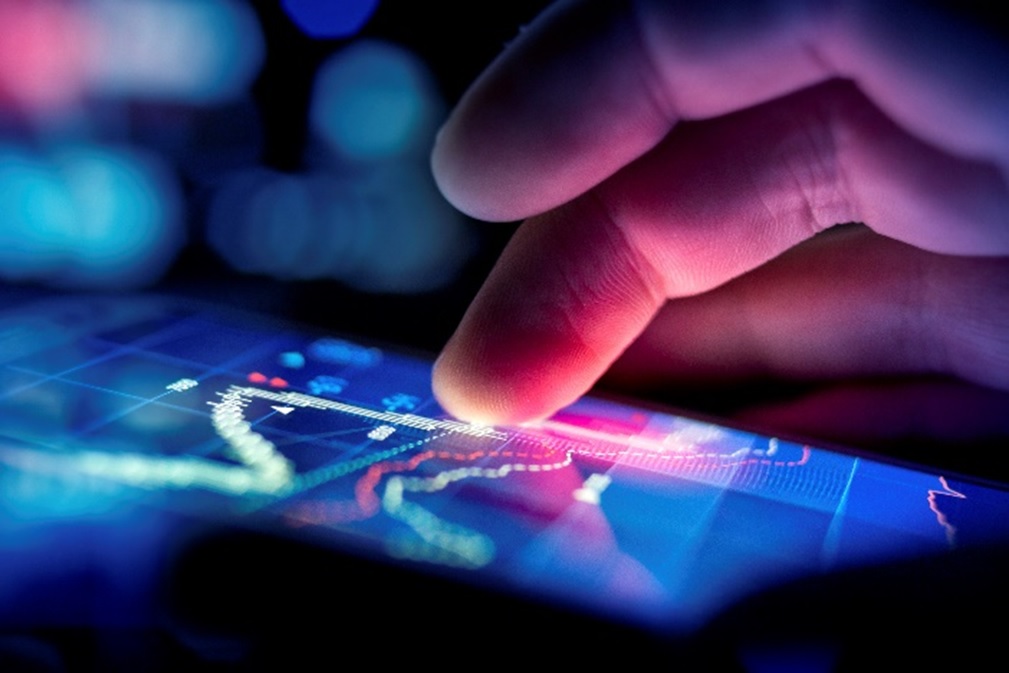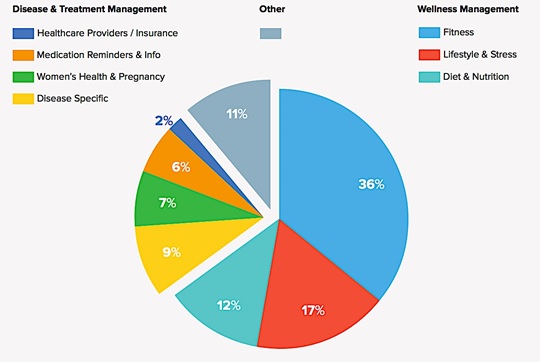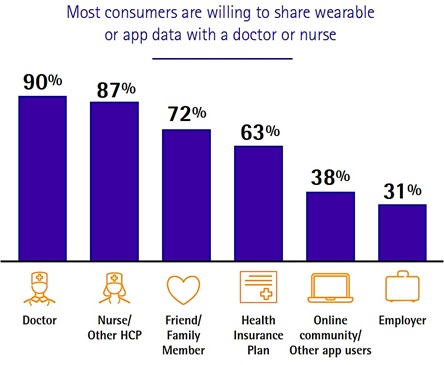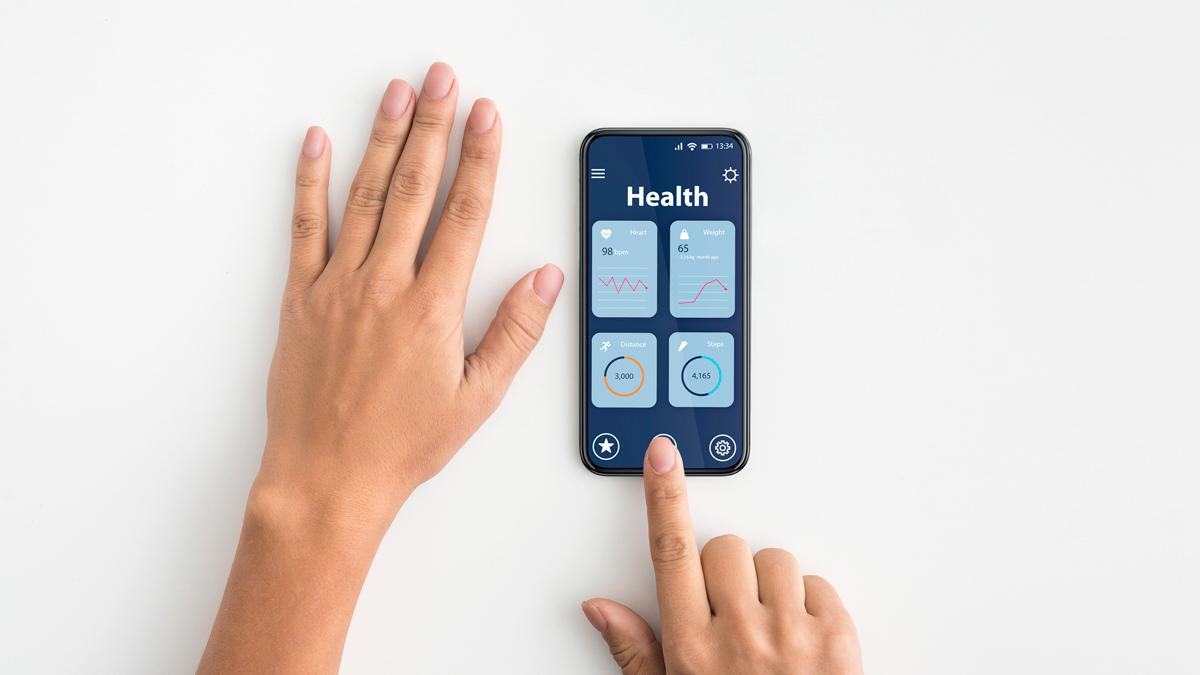Beyond fitness apps: patient-centric mobile health

The numbers of apps for disease awareness and management are increasing and, with patients more willing to share data with HCPs, there are opportunities to better understand how conditions impact everyday life and develop solutions that work via mHealth.
When we hear the term ‘mobile health’, typically the first thing that comes to mind is fitness apps, such as Fitbit or MyFitnessPal, as the notion of ‘quantified self’ or ‘self-tracking’ gains more popularity.
However, the world of patient-centric health apps is much broader than this. Apps can play a vital role in reducing medical care costs, improving clinical outcomes, and increasing access to healthcare.
But what do we mean by mobile health (mHealth)? The World Health Organisation (WHO) coined the term in 2011; the Global observatory of eHealth defines the term as ‘medical and public health practice supported by mobile devices, such as mobile phones, patient monitoring devices, personal digital assistants (PDAs), and other wireless devices.’
In a survey conducted in 2015, the Institute for Healthcare Informatics determined that the number of mobile health apps had more than doubled since 2013, reaching over 165,000. The survey categorises mHealth apps in two main groups: fitness apps that focus on wellness and diet, and other health apps that focus on disease awareness and management.
Figure 1. mHealth Apps by Category 2015

Source: Mevvy, June 2015; IMS Health, AppScript, June 2015; IMS Institute for Healthcare Informatics, August 2015
The findings show about two-thirds of mHealth apps are wellness apps, including fitness, lifestyle & stress, and diet & nutrition. Only one third, so far, focus on disease treatment and management.
Patient-centric mobile health on the rise
Though fitness apps are dominating mHealth, several studies indicate patient-centric apps are gaining momentum and present great business opportunities. Remote consultation and monitoring offer the highest potential, with demand for health data one of the main market drivers.
The mHealth market is generating smart apps that use novel approaches to solve patients’ healthcare problems. The Pain Squad mobile app is a good example of how the Hospital for Sick Children (SickKids) in Canada used the concept of gamification and the convenience of mobile phones to engage young patients in a fun way to help them complete their daily pain diaries. They partnered with the police department and created a theme of a crime-solving police squad that solves a mystery each time the children complete their pain diary. The app increased compliance from 11%, using the old self-reporting method, to an overwhelming 90%.
Other notable examples include apps developed by patients themselves, such as the Pain Companion app for chronic pain sufferers. Daniel Lawniczak, CEO of Sanovation AG, its developer and a chronic pain patient, explains his motivation for developing the app: “I know what it feels like to suffer on a daily basis, getting disappointed again and again, feeling misunderstood, and having pain dominate my life and robbing me of joy and opportunities. However, I have learned to master my pain and was able to get back my life. Because of this personal experience, I have dedicated my life to supporting other patients at achieving the same goal: Mastering their medical condition and getting back their joy of life.”
The app comprises two main components, a pain journal and a community that allows users to connect with other chronic pain sufferers to share experiences and help each other. Researchers can use the data generated by the app anonymously to gain insights into chronic pain.
Taking health data to the next level
Wearable devices and mobile health apps have made health data collection very convenient, as they integrate with patients’ daily activities.
This immense amount of data, generated from wearable devices and health apps, can play a crucial role in future medical advancement. These devices are helping patients and caregivers measure many indicators; they then generate feedback based on users’ input. This marks an interesting change in medical research, where the patients are direct suppliers of data, beyond the information drawn from their medical records. Researchers must combine both sources of information to generate more revealing results to help patients.
Healthcare professionals can benefit from insights into how disease and treatments are entwined in patients’ daily routines; such insights can help them answer questions such as: how frequently does the patient feel a specific symptom? Is it intense? Does it last for long? And how do such symptoms interfere with other activities? These are the sorts of details that it is difficult to investigate in regular doctor visits.
mHealth data privacy
As the healthcare industry is highly regulated, the picture would not be complete without mentioning data privacy matters, especially because the rules and guidance in this space are still a work in progress.
From their side, patients seem willing to share their health data as their adoption of mobile health increases. Talking about the Pain Companion app, Daniel Lawniczak said, “Since the app’s launch in 2012, only a dozen out of 150,000 users have voiced their concerns about their data being automatically uploaded to the cloud. Inversely, most users are willing to share their data; for instance, more than 66% of our users signed up using their Facebook accounts as opposed to email, showing a high degree of trust in the app they chose to use.”
This reinforces the findings of several surveys investigating users’ willingness to share their health data. For example, a survey conducted by Accenture on Patient Engagement in 2016 indicated that 90% of the patients were willing to share their mobile health data with a doctor and 87% with a nurse. Conversely, this willingness dropped significantly to 31% for employers and 63% for health insurance companies (Figure 2).
Figure 2. Consumers’ willingness to share data.

Source: Accenture 2016 Consumer Survey on Patient Engagement
Another survey, conducted in 2015 by KPMG, with 1,000 UK adults, showed over 74% were willing to share their mobile health data with a doctor, but only 7% would be willing to share this same data with their employer.
Patients leading the way
mHealth has empowered patients and enabled them to take control of their health management to a great extent. They are increasingly adopting digital tools and wearable devices and expect to manage their own health more than ever before. Lowering the cost of their care is also a major motive for patients to adopt digital solutions that can achieve convenience and efficiency.
Healthcare organisations must work more on improving patient engagement by leveraging mHealth and developing strategies that meet patients’ expectations. The industry must implement a systematic process to validate mHealth solutions clinically and realise credible studies that focus on evaluating their effectiveness.
About the author:
Christine K Jacob is a digital marketing and communications strategist with more than 13 years of experience in Fortune 100 organisations, where she held leading global, regional and local roles in both marketing and communications.
She founded her boutique agency Digi-Bridges to help her customers unleash the potential of creative and innovative digital media strategies, to successfully connect with their audiences in a noisy and fragmented digital landscape.
Christine also teaches Marketing and Communications at the University of Applied Sciences Northwest Switzerland.
Read more from Christine Jacob:












